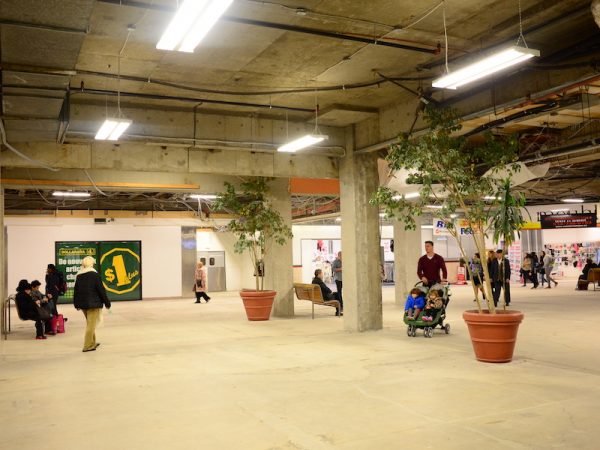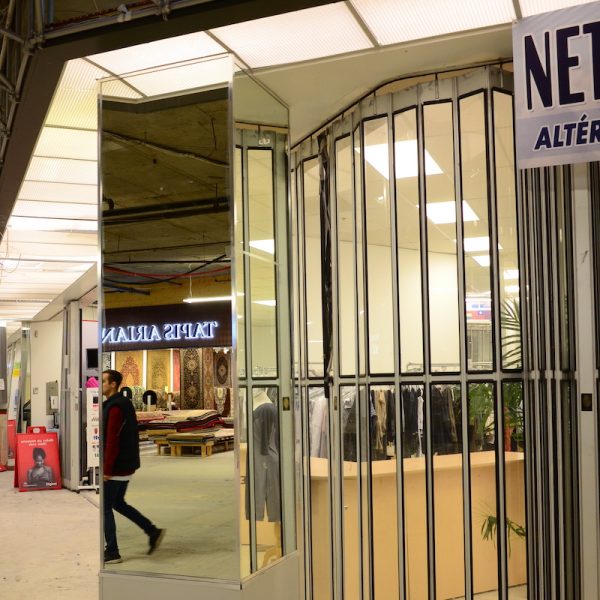“Stare (…) pry, listen, eavesdrop (…) You are not here long.”
—Walker Evans
Two benches and two potted plants do not a “place” make.
The feature image, reprised below, shows a concourse-like area at the merging of two corridors, in the basement of the local shopping center being remodeled.

The placing of two benches and two potted plants attempts to signal the fact that resting here is welcome, as a distinct place for that purpose it is rather timidly defined.
This brings me to the definition given by Prof. Donlyn Lyndon of a good place: in its form, it is one rich in information about its boundaries in space and time, its functions, its occupants and its context … past, present and future” (Quoted from memory).
In contrast, “placelessness,” according to Webster, refers to the “lack of fixed location,” usually referring to the absence of clear boundaries that spatially articulate a “place.”
The place-defining role of boundaries, being patently missing here and only vaguely evoked by the benches and potted plants, and by the stripped concrete structure that virtually holds in it the embryo of a future place, I have preferred to describe my experience as one of “placelessness” rather than one of a “non-place.”
Experiencing “placelessness” is like stepping off a mirror into thin air.

Because of the lack of place in-forming elements of the “resting area” at the center of the concourse-like area, it is rather its edges that attract attention, particularly the way certain mirrors located on one of these edges reflect the opposite one.
I could not resist photographing the reflection, on one of these mirrors, of a person seemingly walking “into thin air,” as metaphor for the basic nature of the experience of “placelessness” as one of being disoriented.
What does the information defining a good place serve, if not to comfort one in the sense of being grounded in the space and time of one’s location … and not in thin air!
End note
I wish to note that the general raw physical state of affairs of the basement is most likely temporary and, however weak in terms of place definition, the presence of the benches and the plants do represent at least an intention of place-marking if not of place-making!
Bibliographic note
Walker Evans quote is taken from the epigraph to Heifermann, M. and Kismaric, C., Talking Pictures (Chronicle Books, S.F., 1994)
Credit Maurice Amiel for all photographs
